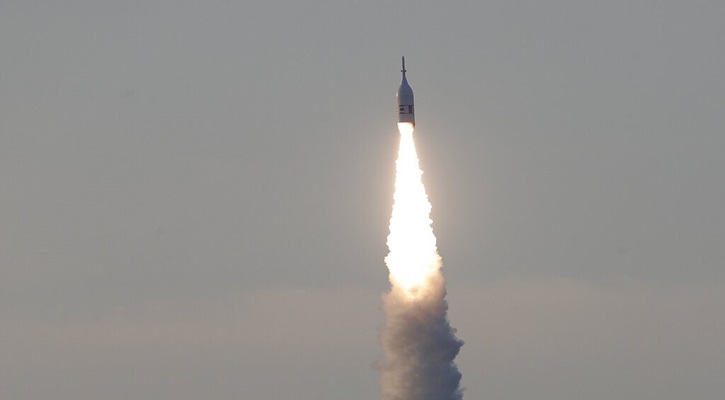Rolle im Portfolio
The fund provides exposure to some of the largest stocks within the developing markets of Poland, Hungary, and the Czech Republic. It is best deployed as a tactical tool as a play on continued growth in that region. The underlying index, CECE Total Return, is narrowly focused in a number of ways. First, it has a small number of constituents (25), so there is considerable concentration within the top names. Second, almost three-quarters of the index is made up of Polish stocks; and finally, on a sector basis it is heavily tilted towards financials. Returns on the index have been quite volatile, exhibiting annualised standard deviation of 25.0% since mid-2009, versus 13.6% on the MSCI World. Over the same period it has shown a correlation of 81% to both the MSCI Europe and to the MSCI World Index. Investors should bear in mind that there is currency risk involved in this type of investment. Because these three countries are not part of the Eurozone, the fund is exposed to the risk that there will be depreciation in the zloty, koruna, or forint currencies. The fund does not intend to pay out distributions, so it may not suit an investor looking for regular investment income.
Fundamentale Analyse
The three countries covered by the CECE Index--- Poland, Czech Republic, and Hungary--- are all members of the European Union (EU), but not part of the Eurozone, meaning that they still use their own domestic currency. Though each has undergone a transformation from communist rule to a market economy, they are still considered emerging markets by index provider MSCI, which bases its classification on a country’s economic development, size, liquidity, and market accessibility. The index will be considerably impacted by the fortunes of Poland, by far its top weighting. As a result of its flexible currency and continued move towards a liberalised economy, Poland has thus far managed to avoid the recession that has hit many of its EU peers. Poland’s GDP grew by 1.4% in the year through the third quarter of 2012, hardly robust but higher than many European countries. On the other hand, the country is struggling with an unemployment rate of 13.3%. The Czech Republic, which is still in the recession it technically entered following the fourth quarter of 2011, registered a growth rate of -1.6% for the 12 months through the end of the third quarter of 2012. The Czech Central Bank recently kept short-term rates at a scant 0.05%, and still predicts that inflation will under-shoot its 2% target as the weakening economy puts downward pressure on prices. Hungary, which has been downgraded to junk status by all the major ratings agencies, is at the time of writing seeking aid from the International Monetary Fund, which has argued the country needs to become more transparent and business-friendly. However, the loan talks appear to have broken down, and Hungary recently hinted it may try to return to the international bond market for funding. In the 12 months through the third quarter, GDP growth was -1.5%, and the unemployment rate stood at 10.6% in November 2012. Not being on the Euro, once seen as a weakness, has given these three countries considerable flexibility in dealing with the crises of the past few years. In tough economic times, a declining currency can help a country by alleviating the burdens of locally-denominated debt, as well as making its exports more attractive to foreigners. Investors in this fund, however, should keep in mind that its exposure to these currencies is unhedged, meaning that as they depreciate it will negatively impact the ETF’s performance. Since mid-2008, the Polish zloty has declined by about 23% against the Euro, the Czech koruna by 10%, and the Hungarian forint by 22%. Not surprisingly, enthusiasm to join the currency union seems to have waned in each of these countries. Trade balance with the rest of Europe has been a major growth driver for the Eastern European countries, boosted in recent years by demand from Germany and a depreciated local currency. The major risks for this group are that Europe or the rest of the world goes further into recession and drags them down with it as global trade dries up, or that capital leaves the countries as foreign investors get skittish. Since June 2009, generally a strong period for stocks, the CECE Total Return Index has posted a cumulative gain of 75.45%, which compares to 40.13% for the broader MSCI Europe, and 47.06% for the MSCI World Index.
Indexkonstruktion
The CECE Total Return Index is a free-float market capitalisation-weighted index covering stocks on the Budapest, Prague, and Warsaw exchanges. It has 25 constituents, and individual weights are capped each quarter at 20%. There are no minimum turnover requirements for new entrants, although the index committee will take trading volume into consideration when looking at the eligible universe. The index is reviewed and rebalanced on a semi-annual basis. To limit turnover of constituents, a maximum of three names can be replaced at each review. Geographically, the index is heavily tilted towards Poland, which represented 74% of the total at the end of December 2012. The Czech Republic accounted for another 20%, and Hungary made up the remainder. There is also a tilt towards the financial services sector, with banks and insurance companies making up 45.7% of the index at the end of December 2012. After that, the biggest sector weights were Materials and Energy at 14.6% each, Utilities at 13.4%, and Telecommunications at 8.8%. The index is highly concentrated, with 51.7% within just the top 5 stocks.
Fondskonstruktion
The fund uses synthetic replication to provide exposure to the underlying benchmark, entering an unfunded swap transaction with parent bank Societe Generale. The fund uses investors’ cash to buy a substitute basket of securities, the performance of which is exchanged for the performance of the index. Lyxor provides full transparency on the components of the substitute basket, which is made up predominantly of European and Japanese equities. The fund aims to maintain zero counterparty exposure by reviewing the swap on a daily basis and resetting whenever its value becomes positive. At the time of writing the substitute basket was valued at 99.77% of the net asset value of the fund. The fund’s holdings, which are monitored daily by Lyxor’s asset manager, are held in a segregated account at Lyxor’s custodian, Societe Generale Security Services. Under the terms of the swap, the counterparty agrees to provide the fund with exposure to the total return of the underlying index, net of any associated taxes, costs, or fees. The return from the swap assumes that all dividends paid by the underlying stocks are reinvested in the index. At the time of writing the fund had assets of roughly €435 million.
Gebühren
The fund has a total expense ratio (TER) of 0.50%. Other costs potentially borne by the unitholder but not included in the TER include swap fees, bid-ask spreads on the ETF, and brokerage fees when buy and sell orders are placed for ETF shares.
Alternativen
For exposure to Eastern European equities, there are a few alternatives, albeit referencing different indices. These include SPDR MSCI EM Europe ETF, Amundi ETF MSCI Eastern Europe ex Russia, iShares MSCI Eastern Europe 10/40 (IE), ComStage ETF MSCI EM Eastern Europe, and db x-trackers MSCI EM Eastern Europe 10/40. Of these, the Lyxor fund is the largest. The product with the lowest TER is the Amundi fund, with a TER of 0.45%.
Die in diesem Artikel enthaltenen Informationen dienen ausschließlich zu Bildungs- und Informationszwecken. Sie sind weder als Aufforderung noch als Anreiz zum Kauf oder Verkauf eines Wertpapiers oder Finanzinstruments zu verstehen. Die in diesem Artikel enthaltenen Informationen sollten nicht als alleinige Quelle für Anlageentscheidungen verwendet werden.

















